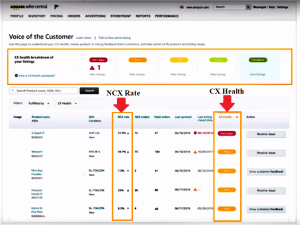Please fill out this form and a SellerEngine Amazon Account Rescue Expert will get back to you. Looking for Software support or want to make changes to your account? Contact us here. First Name Last Name Email Company Phone Number Product Interest*: Account Rescue Please let us know how...
Loading...
Reading time: 4 minutes
Editor’s note: This is a guest post by Jennifer Clark, Content Marketing Manager at TaxJar Tax-free weekends are nothing new. And over the last 10 years, they’ve become a holiday of their own that savvy shoppers plan around. Sales tax holidays offer no sales tax requirement on purchases of...
Reading time: 3 minutes
It’s March again, and you know what that means. It’s time to get out there and see what retailers have been up to. And what better place to light up your business than Las Vegas? Join us again at the ASD and the Prosper Show this month, and let’s...
Reading time: < 1 minutes
Please fill out this form and a SellerEngine Private Label expert will get back to you. Looking for Software support or want to make changes to your account? Contact us here *Required Product Interest*: Private Label Please let us know a bit about your product: [Optional] I would like...
Reading time: 5 minutes
Editor's note: This is a guest post by Jenna Devinney- Marketing Specialist at Webbula. Since 2009, Webbula has been the undisputed industry leader in data quality technology. Their Multi-Method Hygiene and Data Enhancement services mitigate delivery threats, enhance data lists for email campaigns and create actionable audiences for online serving....
Reading time: 2 minutes
Here at Profit Bandit we like to stay on top of things so that's why we're sharing this update. We'd also like to hear your opinions and ideas on the Profit Bandit app and how the team can help. First off some quick updates.Amazon Fee changes for 2019FBA fees...
Reading time: < 1 minutes
‘Voice of the Customer’ or VOC is business speak for how companies stay attuned to customer needs before and after developing their products. On Amazon, VOC is a dashboard that features an analysis of customer experience data.
Reading time: < 1 minutes
A reviewer program available exclusively to Amazon vendors, whereby items are sent from the vendors to Amazon to be passed on to vetted Vine reviewers to test for free. A Vine reviewer keeps the product after submitting a review, which is marked with the blue ‘VINE VOICE’ label.
Reading time: < 1 minutes
Vendor Central is an invite-only platform available to businesses that want to sell products directly to Amazon, known as vendors, first-party merchants or 1P. Once registered, companies submit product listing and wholesale prices through Vendor Central, and wait for Amazon to order and pay for their products. The platform...
Reading time: < 1 minutes
A per item fee that every Amazon venue used to apply at a standard rate for books, music, video, blu-ray & DVDs (BMVD). For non-media products, VCF depended on the type of item, the weight, and the venue. VCF has since been replaced with the Fixed Closing Fee...
Search The Blog
Subscribe To The SellerEngine Blog
Top 70 Ecommerce Blogs

Fit Small Business








